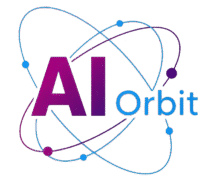THE UNTAPPED POTENTIAL OF VOICE AI FOR ALL
In an increasingly interconnected world, voice AI has become ubiquitous, seamlessly integrating into our daily lives through smart assistants, navigation systems, and interactive interfaces. Yet, beneath this veneer of advanced communication lies a significant paradox: while voice technology promises universal accessibility, it often falls short for millions whose voices deviate from conventional patterns. For individuals with speech disabilities, the very systems designed to enhance communication can become barriers, leaving them unheard or misunderstood. This article delves into how groundbreaking advancements in artificial intelligence, particularly transfer learning and synthetic speech, are fundamentally reshaping this landscape, paving the way for truly inclusive voice AI that listens to everyone.
CHALLENGES IN CURRENT VOICE TECHNOLOGY: THE UNHEARD VOICES
Traditional voice recognition systems are predominantly trained on vast datasets of typical, clear speech. While this approach yields impressive accuracy for the majority, it inadvertently creates significant accessibility gaps. When confronted with atypical speech patterns—whether due to conditions like cerebral palsy, amyotrophic lateral sclerosis (ALS), stuttering, or vocal trauma—these systems often struggle. Users might experience:
- Frequent misinterpretations: Words or phrases are incorrectly transcribed, leading to frustrating communication breakdowns.
- Ignored commands: The system fails to register speech inputs altogether, rendering the technology unusable.
- Lack of nuanced understanding: The inability to process variations in pitch, rhythm, or volume, which are crucial for conveying meaning and emotion.
- Exclusion from digital spaces: Individuals may be prevented from engaging with voice-activated devices, smart homes, or online services, limiting their independence and participation.
The core issue lies in the models’ limited exposure to the rich diversity of human voices. Building truly inclusive voice AI necessitates moving beyond the standard and embracing the full spectrum of human vocal expression.
RESHAPING CONVERSATIONAL AI: A PARADIGM SHIFT FOR INCLUSION
The future of conversational AI is one where technology adapts to the user, not the other way around. This paradigm shift is being driven by innovative AI architectures that prioritize flexibility and personalization.
TRANSFER LEARNING: BRIDGING THE SPEECH GAP
At the heart of this revolution is transfer learning. In essence, transfer learning involves taking a pre-trained AI model—one already proficient in understanding standard speech—and fine-tuning it with a smaller, specialized dataset of atypical speech. This process allows the model to leverage its existing knowledge while adapting to new, unique vocal characteristics without requiring massive amounts of new data from scratch.
The benefits are profound:
- Faster adaptation: Instead of building models from zero, developers can rapidly train systems on specific speech impairments.
- Reduced data requirements: Less bespoke data is needed to achieve high accuracy for individual users or specific groups.
- Improved accuracy for diverse voices: Models become more robust and capable of recognizing a broader range of vocal patterns.
By applying transfer learning, conversational AI systems can begin to understand and process speech that was previously deemed incomprehensible, transforming the experience for countless individuals.
THE POWER OF SYNTHETIC SPEECH AND GENERATIVE AI
Beyond merely understanding speech, generative AI is revolutionizing how individuals with speech impairments can communicate. This technology enables the creation of synthetic voices that can be personalized for each user. Imagine a scenario where a user, based on even a small sample of their natural voice from before an impairment, can train their own “voice avatar.” This avatar can then be used to vocalize text inputs, maintaining a sense of personal vocal identity and fostering more natural communication in digital spaces.
Generative AI allows for:
- Personalized voice output: Users can have a voice that sounds uniquely theirs, rather than a generic text-to-speech voice.
- Emotional expressiveness: Advanced models can synthesize speech with varying tones, inflections, and emotional nuances.
- Enhanced naturalness: The output sounds less robotic and more human, improving the quality of interactions.
For those looking to experiment with generating unique audio outputs or transforming text into speech, tools like a free AI audio generator offer an accessible entry point into the capabilities of synthetic speech technology. This technology is not just about conveying words; it is about preserving and restoring a person’s unique vocal identity.
CROWDSOURCING FOR UNIVERSAL VOICES
A critical component in building truly universal voice AI is the expansion of diverse datasets. Initiatives that allow individuals to contribute their speech patterns—including atypical ones—are invaluable. These crowdsourced datasets serve as vital assets, enabling AI models to learn from a wider variety of accents, dialects, and speech characteristics. By democratizing data collection, we can collectively build AI systems that are inherently more inclusive and representative of global linguistic diversity.
REAL-TIME ASSISTIVE AI: EMPOWERING COMMUNICATION
The advancements in AI are not just about improving recognition; they are about creating dynamic, real-time assistive systems that empower individuals to communicate fluidly and meaningfully.
VOICE AUGMENTATION IN ACTION
Picture a scenario where AI acts as a “co-pilot” in conversation. Real-time voice augmentation systems can take disfluent or delayed speech input and apply intelligent enhancement techniques. These systems can:
- Enhance articulation: Clarifying unclear sounds.
- Fill in pauses: Seamlessly bridging gaps in speech.
- Smooth out disfluencies: Reducing stutters or repetitions.
The goal is to maintain the user’s control over their message while significantly improving intelligibility. For individuals relying on text-to-speech interfaces, conversational AI can now offer dynamic responses, sentiment-based phrasing, and prosody that matches user intent, bringing personality back to computer-mediated communication.
PREDICTIVE LANGUAGE MODELING AND MULTIMODAL INPUTS
Another powerful feature is predictive language modeling. These systems learn a user’s unique phrasing, vocabulary tendencies, and communication patterns over time. This personalized learning enhances predictive text capabilities, significantly speeding up interaction. When paired with accessible interfaces such as eye-tracking keyboards or sip-and-puff controls, these models create a highly responsive and fluent conversational flow.
Furthermore, integrating facial expression analysis and other multimodal input streams allows AI systems to gather more contextual understanding, especially when speech is difficult. By combining what a user says (or attempts to say) with their non-verbal cues, AI can create a more nuanced and effective response tailored to each individual’s comprehensive mode of communication.
EMOTIONAL NUANCE: BEYOND INTELLIGIBILITY
For many who rely on assistive technologies, being understood is a critical first step, but feeling understood is truly transformational. Early voice systems often delivered monotone, robotic speech, devoid of any emotional content. Modern conversational AI is making strides in adapting to and even conveying emotional nuance. This means that AI systems can not only process the literal words spoken but also infer and express sentiment, allowing for richer, more human-like interactions. This capability helps bridge the gap between functional communication and genuine human connection.
THE PATH FORWARD: IMPLICATIONS FOR DEVELOPERS AND ENTERPRISES
The development of inclusive voice AI is not just a technological challenge; it is an ethical imperative and a significant market opportunity. For those building the next generation of virtual assistants and voice-first platforms, accessibility must be a foundational principle, not an afterthought.
DESIGNING FOR INCLUSION: FROM CONCEPT TO CODE
Key considerations for developers include:
- Diverse Training Data: Actively seeking and incorporating datasets that represent the full spectrum of human voices, including various accents, dialects, and speech patterns.
- Supporting Non-Verbal Inputs: Designing systems that can integrate and respond to inputs beyond spoken words, such as gestures, eye movements, or alternative control devices.
- Federated Learning: Employing techniques like federated learning to continuously improve models by learning from dispersed user data, all while preserving individual privacy.
- Low-Latency Edge Processing: Investing in edge computing capabilities to ensure that users do not experience delays that disrupt the natural rhythm of dialogue, which is especially critical for assistive technologies.
Building these capabilities into the core architecture ensures that inclusivity is ingrained from the start.
ACCESSIBILITY AS A MARKET OPPORTUNITY
Beyond the ethical considerations, there is a compelling business case for accessible AI. The World Health Organization estimates that over 1 billion people worldwide live with some form of disability. This represents a substantial and often underserved market. Accessible AI benefits not only individuals with permanent disabilities but also:
- Aging Populations: As cognitive and motor skills decline, accessible interfaces become increasingly vital.
- Multilingual Users: Systems that can adapt to different accents and speech rates improve usability for non-native speakers.
- Temporarily Impaired Individuals: Those recovering from injury or illness can benefit from adaptable voice interfaces.
Enterprises adopting AI-powered interfaces must recognize that supporting users with disabilities is not merely a compliance issue but a strategic move that expands their potential customer base and enhances their brand reputation.
BUILDING TRUST WITH EXPLAINABLE AI (XAI)
As AI becomes more integral to personal communication, transparency is paramount. The growing interest in explainable AI (XAI) tools allows users to understand how their input is processed and how the AI arrives at its conclusions. For users who rely on AI as a communication bridge, this transparency can build immense trust and foster a greater sense of control and reliability over the technology.
THE FUTURE OF CONVERSATIONAL AI IS INCLUSIVE
The true promise of conversational AI extends far beyond simply understanding speech; it lies in its capacity to understand people in their entirety. For too long, voice technology has inadvertently privileged those who speak clearly, quickly, and within a narrow acoustic range. However, with the rapid evolution of AI, we now possess the sophisticated tools and understanding to engineer systems that listen more broadly, respond more compassionately, and adapt more intelligently to the vast spectrum of human expression. The journey toward fully inclusive AI is ongoing, but every voice, every unique pattern, and every individual communication challenge brings us closer to a future where technology truly serves everyone, ensuring no one is left unheard.

